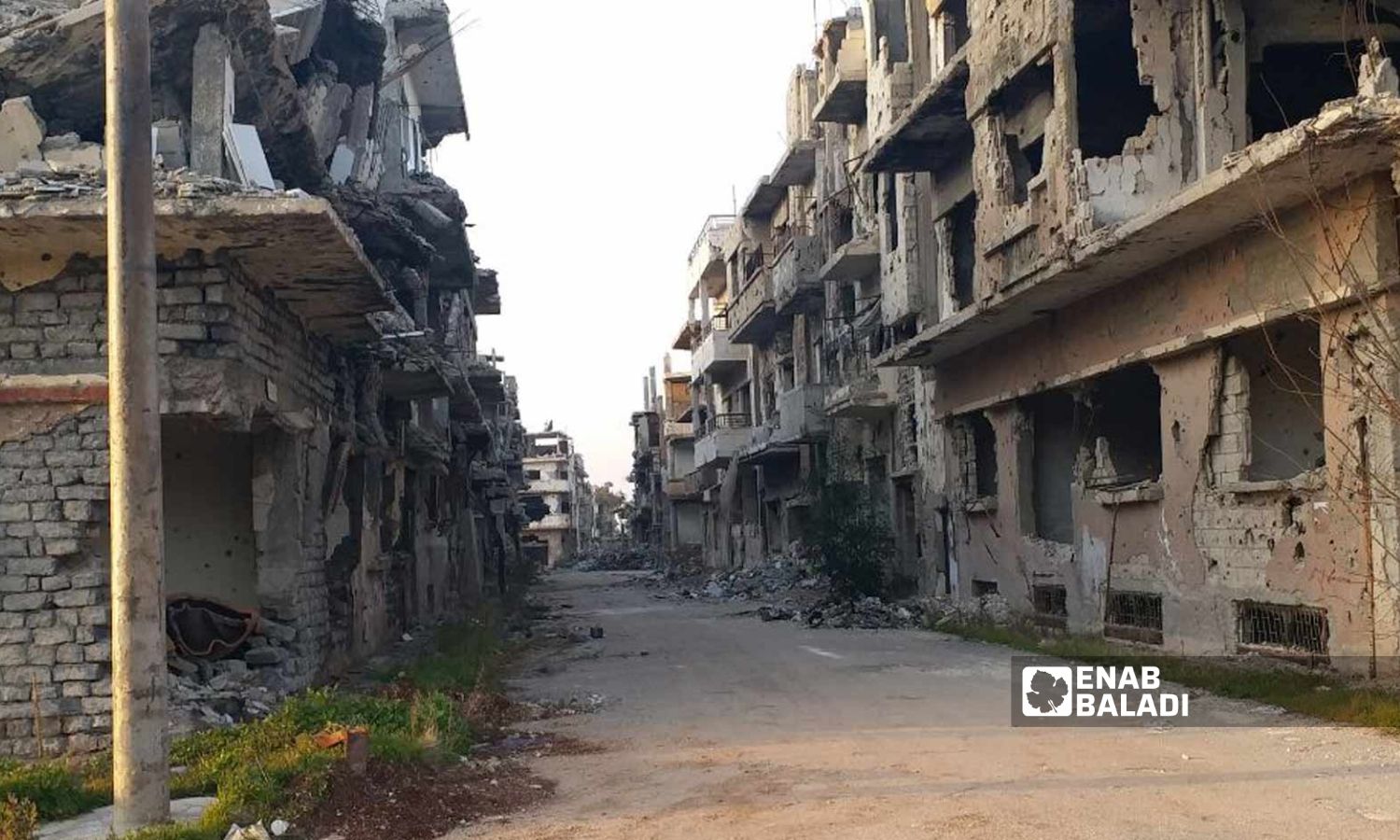



Enab Baladi – Orwah al-Mundhir
Property rents in Homs governorate have seen an unprecedented rise that has doubled in some of the city’s neighborhoods since early October due to the high cost of living and inflation in regime-held areas.
The rise in residential and commercial rents exceeded 50% in rural areas of the governorate, while the percentage reached about 100% in some of the city’s neighborhoods.
Muayyad al-Ahmad, 46, an owner of a real estate office in Homs, told Enab Baladi that the current rent hikes are associated with higher house prices linked to dollar exchange rates on the one hand and the higher cost of construction on the other.
Al-Ahmad confirmed that homes in the city’s neighborhoods are valued in US dollars, similar to the capital’s real estate market. Higher prices are caused by the difference in the US dollar exchange rate, adding that most landlords tie their fares to the US dollar as well, raising prices as the value of the pound depreciates.
Omar al-Sibsabi, one of the tenants in the Jouret al-Shayah neighborhood of Homs, told Enab Baladi that his landlord raised his rent from 150,000 to 250,000 SYP this October, adding that he rented the same house for 50,000 SYP three years ago.
Since early October, the value of the Syrian pound has fluctuated up and down against the US dollar and foreign currencies, ranging from 5000 to 5200 SYP against the US dollar.
The transportation and fuel crises in regime-controlled areas imposed new conditions that forced business owners and employees living in the governorate’s countryside to relocate from the countryside to the city in an attempt to avoid the cost of moving between their places of residence and work. This has naturally led to increased demand and pressure on the rent market.
Jawad (43), owner of a real estate brokerage office in Homs, told Enab Baladi that the transport crisis had driven many to move their places of residence from the countryside to the city. The monthly cost of transportation was about the same as renting a home in an average inner-city neighborhood. The rise in gasoline prices (7000 SYP per liter) has even led car owners to consider moving to the city, putting more pressure on rents.
Jawad added that the real estate market is not experiencing new offers while witnessing growing demand, which has contributed to increasing prices.
The rise in rents is not limited to residential properties but has also affected commercial properties. The monthly rent of some shops exceeded 2 million SYP, a precedent that the city of Homs had not previously known.
Khaled al-Khalaf, the owner of a clothing store on al-Hadara Commercial Street, told Enab Baladi that the rent of his shop rose from 1.2 million SYP to 2.7 million SYP after “arduous” negotiations with the shop owner, for a period not exceeding three months only, with a further increase expected at the end of the current lease.
Al-Khalaf noted that the value of monthly rents in the shops on al-Dablan Street and the main junctions exceeded 2.5 million SYP, which is likely to increase further.
“These are sums we have never heard of in the city,” he said.
On 10 October, the head of the Homs City Council, Abdallah al-Bawab, attributed the reasons for the rise in rents to the inflation of prices in general and the cost of living in particular. Landlords controlled the value of rent as a result of increased demand for rent and insufficient supply, as many of the governorate’s demolished properties had not yet been restored.
Al-Bawab explained that rent value was subject to demand, supply, and proximity to the city, given the lack of fuels and means of transportation. This prompted many residents in the countryside to move to the city, increasing the rent demand.
Al-Bawab noted that rent values could not be determined due to it being subject to supply and demand, therefore, only controlled by market movement, as he put it.
if you think the article contain wrong information or you have additional details Send Correction